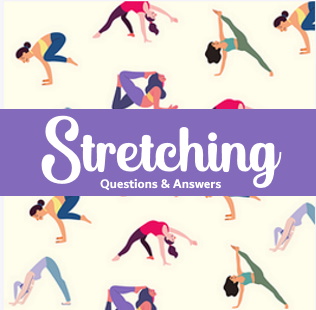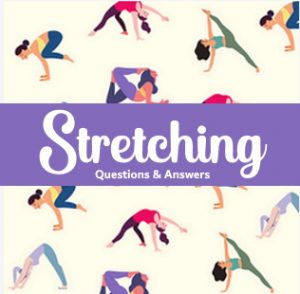Whether you plan to lose weight or accomplish some sort of strength training, stretching is a form of exercise that can deliver on your fitness-based goals. However, despite this promise, most people overlook the role of stretching when it comes to general fitness.
That is why experts recommend adding stretching to your workout regimen because it does not only offer ultimate flexibility but also ensures you stay healthy and injury-free.
When you are feeling sluggish or out of shape and want to make some serious progress towards your fitness goals, perform stretches to keep your muscles and joints moving.
Fitness, in general, is determined by factors like age, bone shape, injuries, gender, amount of fat, pre-existing medical conditions, and hormones.
Nonetheless, proper stretching sessions can go a long way in making your joints overly flexible.
Depending on your fitness goals, experts recommend certain types of stretching. Athletes, for instance, are likely to achieve their goals faster and benefit more from dynamic stretching than say static stretching. Yoga, too, can help the average person stay flexible.
However, what type of stretching is most recommended for general fitness purposes? Read on to find out the link between general fitness and the type of stretches you can benefit from.
What type of stretching is most recommended for general fitness purposes?
The type of stretching that is the most recommended for general fitness purposes is static stretching because it offers holistic benefits to the body. Unlike other forms, static stretching impacts many components of the body and delivers optimal benefits that range from increased flexibility to muscular fitness and cardiovascular endurance.
Its standout aspect is that besides shoring up an individual’s range of motion (ROM), it comes with holistic benefits that carry over to other components of general fitness, namely; enhanced mobility and positional change, increased blood flow, focus, cardiovascular health, increased rate of recovery from minor muscular injuries, and reduced likelihood of sustaining injury.
What Is General Fitness?
General fitness refers to the body’s overall well-being and covers five components, namely; muscular strength, flexibility, muscular endurance, body composition, and cardiovascular endurance.
Despite the well-documented benefits of stretching, a lot of people, either at the gym or during workouts, consider this form of exercise as an unnecessary extra effort.
So, what if stretching is the missing piece of the puzzle in your fitness regimen?
Importance of Stretching to The Body
 Undeniably, stretching plays a vital role in the body’s overall health and fitness. If we may pluck a leaf from the pet book, you will notice that dogs and cats often stretch their bodies after a period of relaxation or immobility.
Undeniably, stretching plays a vital role in the body’s overall health and fitness. If we may pluck a leaf from the pet book, you will notice that dogs and cats often stretch their bodies after a period of relaxation or immobility.
In that respect, we may be forgiven to conclude that stretching is an animal instinct and, therefore, subconsciously happens to us.
Far from that, the type of stretching referred to herein is deliberate, scheduled, and part of your workout regimen. That said, below is an outline of how stretching is important for general body fitness:
- Stretching eases tensions on compressed muscles, thereby enhancing lubrication and range of motion.
- Stretching limits the likelihood of suffering from muscle spasms that occur when force is applied unevenly.
- Improves flexibility and mobility by enhancing positional change.
- Enhances blood flow, thereby boosting focus and cardiovascular health.
- Minimizes the chance of sustaining an injury in the event of a poor or awkwardly taken move.
- Stretching boosts the rate of recovery from minor injuries that don’t tear bone ligaments.
- It reduces muscle stiffness and soreness.
Five Common Types of Stretching
Different types of stretches exist and are categorized based on the amount of effort required to execute them, and the body’s component they impact most.
Certain types of stretching require slight muscle movement, while others need a synergistic combination of muscle groups to keep going – and can double up as forms of workouts.
Based on the aforementioned aspects, five types of stretching exist, and we shall preview each one to establish the most recommended for general fitness purposes.
#1 Static Stretching
This form of stretching is easy to execute and is quite familiar to most people. In static stretching, the body is at rest, and as a participant, your main goal is to stretch a group of muscles to their maximum capacity and hold the stretch for 30 to 45 seconds before releasing.
Static stretches are often conducted as a cool-down for post-workout or after long periods of immobility. Also, depending on the mode of execution, static stretching can be classified into two types, namely:
- Active stretching; involves one person applying force for more intensity.
- Passive stretching; the use of an assistive device or partner in applying force for extra intensity.
#2 Dynamic Stretching
This type of stretching requires an individual to mimic sports patterns or intended exercise using continuous movements. It is popular among athletes and sportspeople who seek to enhance flexibility and mobility. Athletes also use dynamic stretching to conserve energy before the main event.
#3 Ballistic Stretching
Unlike static and dynamic, ballistic stretching is thought to carry more risk because the simultaneous movement of muscle groups is involved. It is the type reserved for gym experts, extreme athletes, and fitness gurus only.
#4 Isometric Stretching
Also called Proprioceptive Neuromuscular Facilitation (PNF), isometric stretching shares all the aspects of static stretching, except that the body at rest should be positioned isometrically. Physicians recommend it for those looking to develop more flexibility, or as a post-injury therapy.
#5 Active Isolated Stretching (AIS)
The active isolated stretching technique is where a stretch is held for two seconds, released, and the pattern is done repeatedly. However, the participant is required to exceed the previous stretch resistance to ensure progress.
General Fitness: What Type of Stretching Is Recommended?
Experts mostly recommend static stretching, whether you plan to shore up your weightlifting career, become overly flexible, or work towards cardiovascular endurance.
Unlike other forms, static stretching is easily executed and delivers optimal benefits that range from flexibility to muscular fitness. It also improves an individual’s range of motion, and its holistic benefits carry over to other components of general fitness.
Final Thoughts on What Type of Stretching is Most Recommended for General Fitness Purposes
Stretching, despite being overlooked by many people, could be the missing puzzle in your strength training and workout regimen. It is in itself a form of physical exercise and is linked to many health and fitness benefits.
Also, beyond offering more flexibility and mobility, stretching can boost non-tangible health aspects such as cardiovascular endurance and body composition. However, with so many stretching techniques, it is common to confuse them based on their execution.
Therefore, experts point to static stretching as the best bet for anyone looking to develop general fitness. That is because, without discrediting other forms of stretching, the standout aspect with static according to experts, is that it benefits the body holistically.
